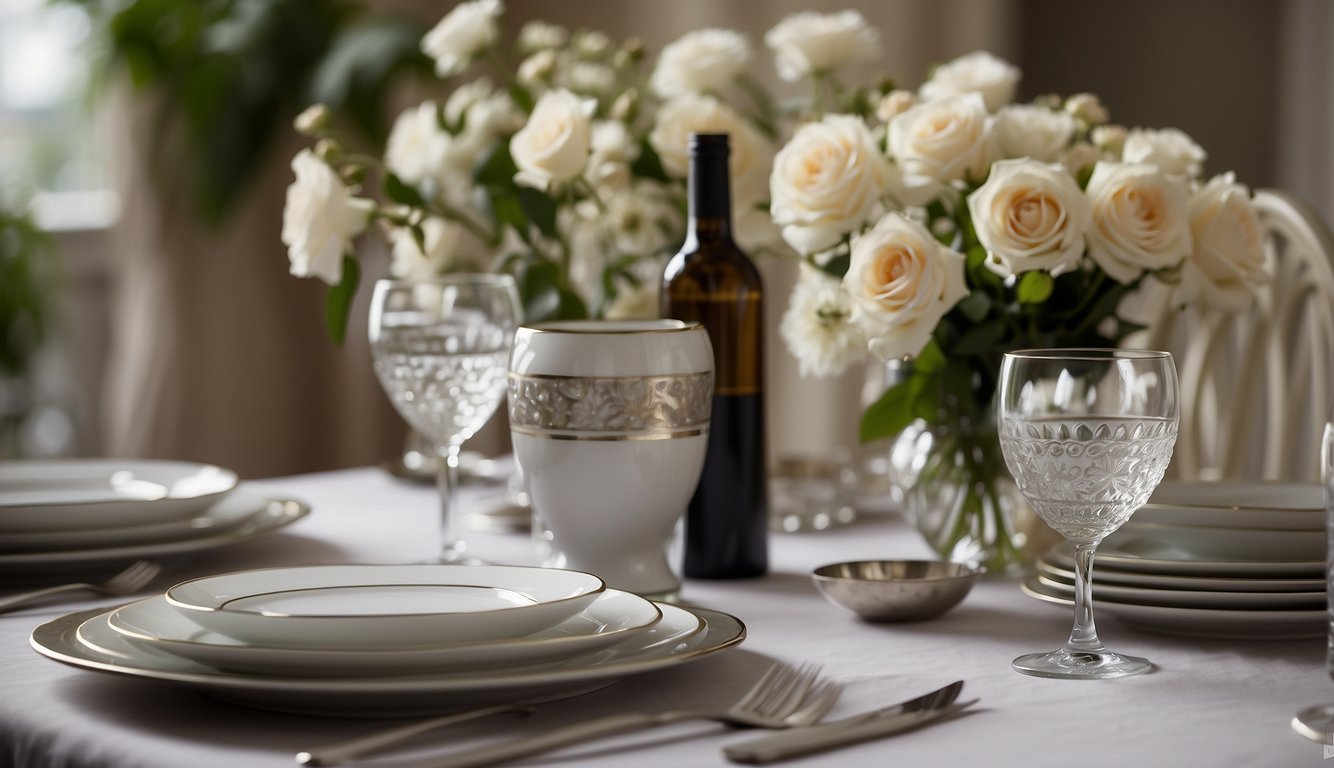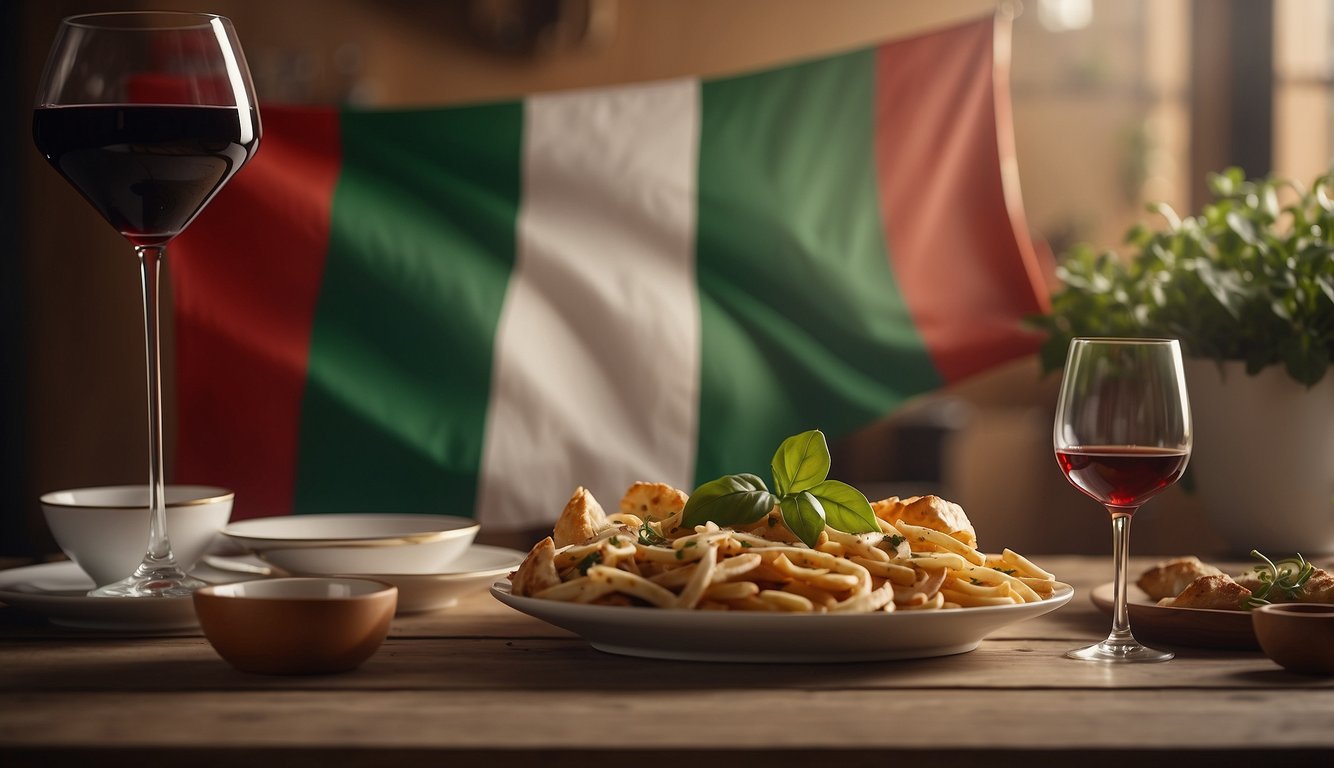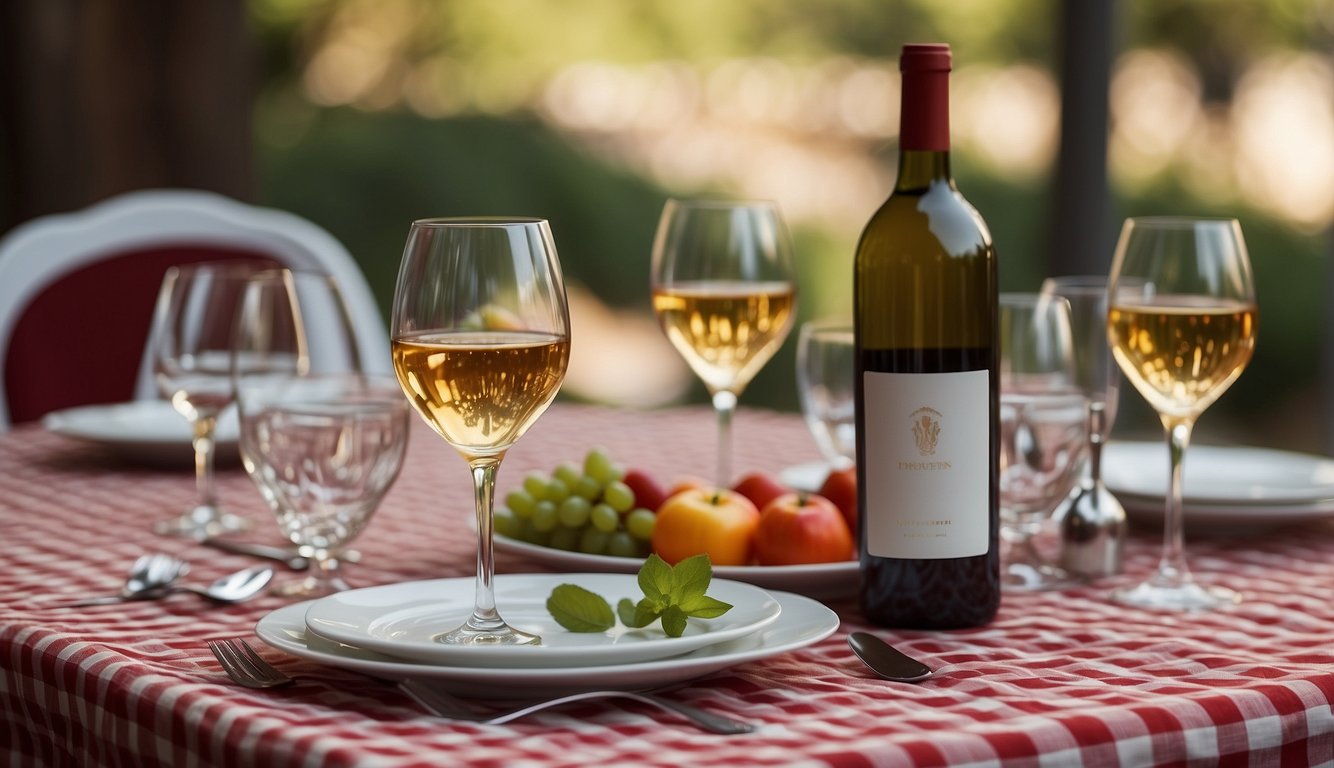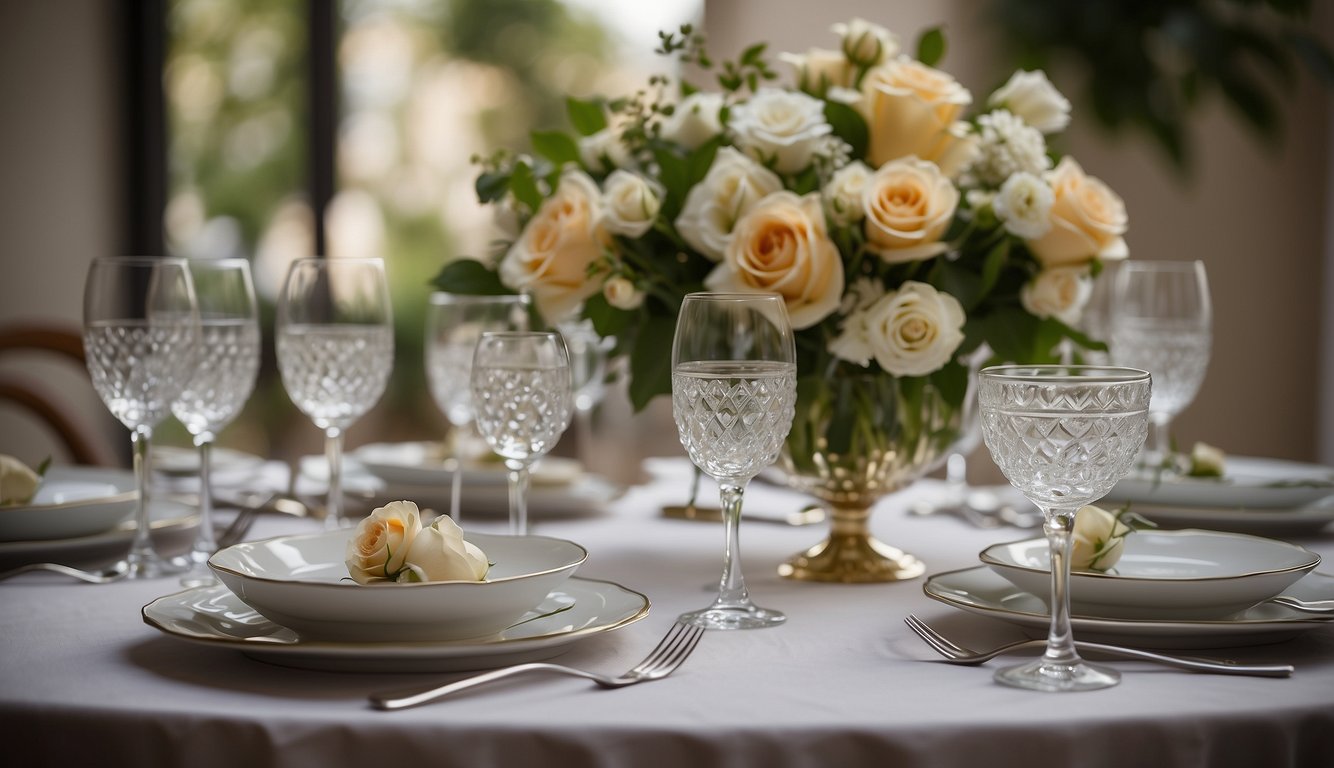Diving into the heart of Italian culture has taught me that Italy’s essence goes much deeper than its renowned historical landmarks and culinary pleasures. It’s equally present in the complex dance of social rituals. Every gesture, from a sincere embrace to the careful selection of attire, mirrors Italy’s commitment to sophistication and decorum in social interactions.
This introduction to Italian etiquette is more than a guide; it’s a passport to engaging authentically with the Italian spirit. From the intricacies of greeting friends to the art of hosting, these customs paint a vivid picture of life in Italy. Dining etiquette, in particular, is an arena where tradition shines, with each meal reflecting centuries of culinary heritage. As I navigate these social landscapes, I gain more than just knowledge; I earn a deeper connection to the Italian way of life, rich with regional diversity and steeped in respect for the bonds that unite us.
- Italian etiquette is integral to experiencing and respecting the local culture.
- Social interactions, including greetings and dining, follow specific customs.
- Being aware of differences in regional etiquette enriches the Italian experience.
Basic Principles of Italian Etiquette

Respect is fundamental in Italian culture and extends to how I greet people, use the language, and handle personal space.
When greeting, handshakes are common for first introductions, accompanied by a direct smile and eye contact to convey sincerity. In more familiar settings, a kiss on both cheeks is traditional.
I find it essential to attempt some basic Italian phrases, as they show politeness and an effort to appreciate the local culture. Italians take pride in their language, and responding even with a simple “Grazie” or “Buongiorno” can leave a positive impression.
A genuine smile goes a long way, but it’s especially valued in Italy when I have established a rapport. On the street, however, Italians may not smile as openly, which is just a sign of maintaining a neutral demeanor in public.
I’ve learned that Italians use gestures expressively to emphasize their conversations. However, I’m careful not to mimic them incorrectly, as they can have specific meanings and might lead to misunderstandings.
Regarding personal space, while Italians are known for being warm and friendly, they also respect personal boundaries. I maintain a respectful distance when speaking to someone who’s not a close friend or family member.
The concept of bella figura, or making a good impression, governs many aspects of etiquette in Italy. It is about presenting myself well, behaving graciously, and always displaying good manners.
Ultimately, when I’m in Italy, I aim to be courteous, show respect, and observe closely to follow the locals’ lead, making every effort to honor the nuanced practices of Italian etiquette.
Greetings and Language

Mastering greetings in Italian is not just about using the correct words; it’s about expressing warmth and respect through both what I say and how I say it. Knowing the correct phrases and the appropriate non-verbal cues is essential to making an excellent first impression.
Verbal Greetings
In Italy, the verbal greeting I choose can set the tone for an interaction. During the morning, I use “Buongiorno” to say “Good morning,” and in the evenings, “Buonasera” is the way to say “Good evening.” When departing, rather than a simple “bye,” I say “Arrivederci,” which is more formal and polite. In informal situations with friends or acquaintances, I might just use “Ciao” for both hello and goodbye.
- Greeting new acquaintances: It’s proper to address them with titles like “Signore” (Mr.) or “Signora” (Mrs.), followed by their surname.
- When I need help: Phrases like “Scusa” for “Excuse me,” “Per favore” for “Please,” and “Grazie” for “Thank you” go a long way.
Non-Verbal Greetings
The way I greet someone nonverbally in Italy is just as important as the words I use. A firm handshake combined with direct eye contact conveys confidence and respect. Among friends and family, a cheek kiss—usually two, starting with the left cheek—is common. Maintaining confident yet friendly body language is key.
- Meeting for business: A handshake is customary.
- Greeting an Italian friend: I might opt for the cheek kiss.
Common Italian Phrases
Learning some common Italian phrases can help me navigate various social situations in Italy. It’s not just about the words; it’s about being polite and showing that I respect the Italian culture.
- Expressing thanks: “Grazie” is crucial.
- Making polite requests: “Per favore” is as necessary as “please” in English.
- Apologizing: If I need to apologize, I use “Scusa.”
My knowledge of these aspects of the Italian language and etiquette shows my respect and appreciation for the culture, making my interactions with locals more authentic and warm.
Dining Etiquette

In Italy, appreciating the local dining customs is a delightful part of the gastronomic experience. I’ll guide you through meal structures, table manners, and tipping practices, ensuring you savor your meals just as the Italians do.
Meal Structures
In Italy, mealtimes are a cherished part of the day. Breakfast, known as “colazione,” is usually light, consisting of coffee and pastries. Lunch (“pranzo”) and dinner (“cena”) are more elaborate, where multiple courses are enjoyed leisurely. The structure often includes:
- Antipasti (Starters): Often cold dishes such as cured meats, cheese, or seafood.
- Primi (First course): Typically a pasta, soup, or risotto dish.
- Secondi (Main course): Usually meat or fish.
- Contorni (Side dishes): These accompany the secondi and are often vegetables or salad.
- Dolce (Dessert): Sweet treats to conclude the meal.
Wine and water are common beverages, with wine being a respected complement to Italian dishes.
Table Manners
Practicing Italian dining etiquette is a sign of respect when sitting down to dine. Here are a few pointers:
- Bread: It is placed directly on the tablecloth rather than on a plate and is meant for mopping up sauce.
- Buon Appetito: This phrase is often exchanged before beginning the meal, as a way to wish everyone a good meal.
- Napkin: Once you’re seated, place it on your lap. It’s not for tucking into your collar.
- Eating: Wait until everyone is served before starting. Also, don’t order a cappuccino during a meal, it’s typically enjoyed only after or separate from meals.
- Cheese: If cheese isn’t offered, it may not be appropriate for the dish you’re eating.
Respecting these norms reflects an understanding of the care with which Italian cuisine is prepared.
Tipping Practices
Tipping in Italy isn’t obligatory as service charge is often included in the bill, known as “coperto.” However, it’s polite to:
- Leave a tip: If the service is exemplary, leaving an additional 5-10% tip is appreciated but not expected.
- Cash tips: If you decide to leave a tip, do so in cash, directly to the server, to ensure it’s received by the staff.
By familiarizing myself with these customs, my dining experiences in Italy are enriched, and I can respectfully engage with the local culture.
Gift Giving and Receiving

When I think about Italian culture, I think of the utmost care and thought that goes into selecting and presenting gifts. These offerings are not just items but a reflection of the thoughtfulness and respect you hold for the recipient.
Choosing the Right Gift
When I’m choosing a gift, I always remember that in Italy, the gesture itself holds as much weight as the gift. For example, flowers can be a delightful choice but should be given in odd numbers, except for 13, which is considered unlucky. Chocolates are also popular, especially if they’re high-quality or from a fine chocolatier. However, gifting a bottle of fine wine shows good taste and an appreciation for Italian excellence.
Gift Presentation
Presentation is crucial in Italian etiquette, and every gift I give is typically wrapped elegantly. The wrapping is often seen as a part of the gift itself, conveying the same level of respect as the item within. It’s key to remove price tags, as the cost is less important than the act of giving. When I receive a gift, I express gratitude and often open it immediately to show appreciation for the thoughtfulness of the giver.
Dress and Appearance

In Italy, the art of looking good is paramount. Making a bella figura, or good impression, is not just about the clothes but the character they reflect.
General Attire
When I dress for any day out in Italy, I choose a stylish and subdued outfit. I avoid casual clothing like flip-flops and shorts unless I’m heading to the beach. Italians take pride in a neat appearance, so I ensure that my clothes are well-fitted and my overall look is polished. For footwear, I select stylish yet comfortable shoes because I’ve learned that walking on cobbled streets and historical sites is common.
Dress for Occasions
I’ve noticed that Italians often lean towards elegance and sophistication when dressing for special occasions. If I am ever invited to someone’s home for dinner, I tend to wear something smart but not overly formal – perhaps a tasteful dress or a tailored jacket and trousers. I remember from an etiquette guide I read that if the invitation states ‘informal’, it means smart clothes and definitely not flip-flops or shorts. It’s all about respecting the host and showing that I care about my character and dress appropriately.
Social Interactions and Body Language

In my experience, understanding the nuances of Italian social interactions and body language is key to effective communication. Much like a dance, the rhythm of gestures and proximity plays a crucial role in conveying meaning.
Personal Space and Touch
Italian culture is generally more tactile and expressive than some others. When interacting, I find that Italians tend to stand closer to each other, compared to the distance I might keep in more reserved cultures. Touch is a form of bonding and isn’t reserved for just family and close friends; light touches on the arm or shoulder during a conversation are commonplace.
Body Language and Gestures
The role of body language in Italy cannot be overstated. Making direct eye contact, for instance, signals engagement and honesty in a conversation. Italians are also known for their expressive hand gestures, which accompany speech and emphasize points. These gestures can range from a flick of the wrist to underline surprise to the classic ‘finger purse’ indicating a question or disbelief. It’s a vibrant part of the language that adds depth to the spoken words.
Special Occasions and Celebrations

In Italy, our special occasions and celebrations are deeply interwoven with our heritage, marked by vibrant religious festivals and intimate family gatherings. I’ve noticed that these moments are cherished, reflecting our cultural values and traditions.
Religious and Public Holidays
- Easter: I often observe how Easter is celebrated with great fanfare, particularly due to Italy’s strong Roman Catholic roots. We have unique customs that vary from region to region, which may include special masses, processions, and, of course, feasting with loved ones.
- Christmas: Come December, I bask in the festive air, visiting the nativity scenes and attending midnight mass at a religious site. It’s a time when families unite and Italian culinary traditions take center stage with dishes like panettone and torrone.
Family and Social Gatherings
- Weddings: In my experience, Italian weddings are elaborate affairs filled with traditions. For example, I’ve often seen the bride carry a small bag called ‘la busta’ for guests to fill with money, contributing to the couple’s new life together.
- Festivals: I love attending local festivals, which are outstanding social engagements reflecting the heart of our customs and traditions. They’re often dedicated to particular saints, harvests, or historical events featuring communal meals, music, and dancing.
Visiting Italian Homes and Businesses

When I visit Italy, understanding the nuances of Italian customs adds depth to my interactions, whether I’m a guest in someone’s home or stepping into a business meeting. Successful visits hinge on respect for local norms, from punctuality to appropriate titles.
Host and Guest Dynamics
In Italian homes, I find that punctuality is appreciated, though arriving exactly on time can sometimes be perceived as too eager. As a sign of respect, I always aim to arrive within 15 minutes of the invited time. As for gifts, a bouquet of flowers or a quality bottle of wine are excellent choices to honor my host.
Communication is key during my visits. Engaging in Italian conversation with guests and hosts shows my willingness to partake in the social fabric of the home. Addressing individuals with their appropriate title, such as “dottore” or “professore”, demonstrates my recognition of their personal or professional status.
Business Etiquette
When engaging in business in Italy, punctuality sends a strong message about my reliability, so I make it a priority to be on time. However, I’ve noticed that Italian businesses might have a more relaxed approach to meeting start times.
During meetings, I’m always mindful to heed the hierarchical structure, acknowledging elders and senior figures first. It’s a sign of politeness to wait until invited to sit; it shows respect for the existing business dynamics. In communication, I remain formal until the atmosphere suggests a shift to a more casual tone—following the Italian communication cues is crucial.
Public Decorum

In Italy, public decorum is centered around respect and warmth, reflecting the cultural emphasis on proper social behavior. My experience has taught me that how you conduct yourself in public spaces is crucial in setting a positive impression.
Public Behavior
Italians value respectful interactions, and this extends to everyday public behavior. I always make sure to:
- Speak at a moderate volume: Loud conversations are frowned upon.
- Avoid bad behavior: Anything deemed disrespectful or disruptive can be met with disapproval.
- Gestures play a big role in communication. However, I’m cautious with hand gestures as some may be interpreted as rude or carry meanings of bad luck.
For greetings, a firm handshake denotes formality, while friends exchange the customary two kisses on the cheeks. In more casual contexts, I might hear “Ciao,” but I opt for “Buongiorno” or “Buonasera” in formal situations.
Sightseeing Etiquette
Sightseeing in Italy offers a chance to immerse myself in the local culture, but there are certain etiquettes I follow:
- Respect sites by speaking quietly and avoiding mobile phone use in sacred or solemn places.
- Acknowledge cultural differences: I take note of signs and instructions, especially since some historical sites have specific rules.
- When capturing memories, it’s polite to ask before taking photos of people or private property.
During tours, a friendly “Cin cin” (cheers) during a wine tasting is a warm gesture, but I reserve it for the right moments so as not to misinterpret it as casual salute.
Regional Variations and Cultural Nuances

Italy’s rich tapestry of culture is woven with distinct regional threads, each carrying its unique customs and language dialects. From the spirited greetings in the bustling piazzas of Naples to the more reserved nature of the north, I’ve learned to navigate these differences with respectful curiosity.
Local Customs
In the south, I often find a warm and effusive greeting: a hearty “Ciao!” and sometimes cheek kisses, which are common. The manner of dress here can be casual, reflecting the Mediterranean lifestyle. Conversely, in regions like Lombardy or Piedmont, my interactions are more formal, with handshakes preferred over cheek kisses, and a more conservative dress code is observed. When I’m invited to someone’s home in Italy, a gift such as wine or chocolates is always appreciated, but as I discovered through Expatica, it’s important to avoid certain flowers like lilies or chrysanthemums due to their association with funerals.
Direct eye contact is another feature of Italian communication that I’ve noted; it usually denotes honesty and engagement, though I find it’s less intense in the northern areas.
Language Differences
As I traverse the landscape of Italian society, it’s captivating to hear the diversity of dialects. Standard Italian is widely understood, but regional languages like Neapolitan or Sicilian can sometimes feel like entirely different tongues. In fact, areas such as South Tyrol even have German as a prevailing language, which reflects in the local culture and etiquette.
Here’s a quick snapshot of language diversity I’ve experienced:
| Region | Predominant Language or Dialect |
|---|---|
| Tuscany | Standard Italian |
| Naples | Neapolitan |
| Sicily | Sicilian |
| South Tyrol | German |
It’s essential to attempt a grazie or per favore in the local dialect; it shows respect and an effort to embrace the local culture, enhancing my interactions. Moreover, paying close attention to the regional differences in language often gives me deeper insights into the traditions and values that shape the customs and etiquette of each area.
Our Opinion

I’ve found that embracing the nuances of Italian culture and etiquette enriches the travel experience. When in Italy, a respect for mealtime traditions goes a long way, as I’ve learned that dining is more than just eating—it’s a social affair. I ensure to never talk with my mouth full or burp, as it could be seen as impolite by my Italian hosts.
Here’s what really stood out to me:
- Dress appropriately: Italians take pride in their appearance and it reflects in their expectation of visitors. Wearing neat attire is a must.
- Respect the schedule: While flexibility in punctuality is observed, I always strive to be respectful of time, especially in professional settings.
- Mind your table manners: Italian dining etiquette is key. Pass items like bread or salt to your neighbors as a gesture of goodwill.
- Mealtime is an event: I revel in the chance to engage in lengthy conversations that tap into the rich tapestry of Italian life. This is particularly true when dining with friends or family.
By honoring these simple aspects of Italian etiquette, my experiences are always met with warmth by the locals. It’s fascinating how small gestures of respect can weave a visitor seamlessly into the vibrant fabric of Italian society.
FAQ – Italian Etiquette
How should I greet people in Italy?
A handshake is common for a first meeting. Among friends and family, a kiss on both cheeks is the norm. Always use “Signore” (Sir) or “Signora” (Madam) with the surname until you are invited to use first names.
What is the dress code when visiting churches or religious sites in Italy?
Dress modestly when visiting churches or religious sites. Cover shoulders, knees, and midriffs, and remove hats when entering such places.
Is it acceptable to split the bill at restaurants in Italy?
Splitting the bill is not as common in Italy as it is in other countries. Usually, one person will offer to pay for the entire table. However, it is becoming more acceptable, especially among younger people and friends.
If you enjoyed reading about Italian Etiquette, check out our other articles:
- Bowling Etiquette 2024: Tips for Polite Play on the Lanes
- Surf Etiquette 2024: Key Rules for Sharing the Waves
- Tennis Etiquette 2024: Key Rules and Polite Play for Beginners
- Laundromat Etiquette 2024: Tips for a Harmonious Wash Day
Feel free to also check out our other Articles from the category “Etiquette & Manners“ and don’t forget to follow us on Pinterest.






